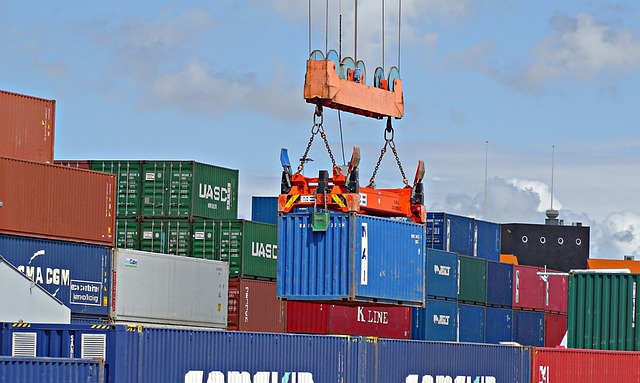-
The Bureau of Customs revealed causes of delays in import processing, including such factors as the Terminal Appointment Booking System and slow truck movement, in its 2022 Partial Time Release Study
-
Most delays occurred in pre-customs and post-customs processes with customs processing accounting for a smaller portion of the overall average time (30% for import and 18% for export)
-
The study recommended enhanced digital customs processes, streamlined procedures, and promoted collaboration among stakeholders to reduce delays and improve customs efficiency
-
It pushed for the adoption of the Customs Processing System under the Philippine Customs Modernization Project to address the lack of integration among various systems
-
It also encouraged online payment methods and onboarding of all trade regulatory agencies to the National Single Window to help eliminate manual processing time and enhance efficiency in customs procedures
The Bureau of Customs (BOC) has revealed causes of delays in import processing, including such factors as the Terminal Appointment Booking System and slow truck movement, in its 2022 Partial Time Release Study (TRS).
The study pointed to most delays occurring in pre-customs and post-customs processes with customs processing accounting for a smaller portion of the overall average time (30% for import and 18% for export).
Other problems include:
- broker-related issues, such as missing documents and required licenses, delaying value verification processes;
- challenges related to the submission of documents by customs brokers, with permits not being directly transmitted to BOC by relevant government agencies;
- intermittent internet connections, leading to delays in BOC’s Electronic-to-Mobile System and Customer Care Portal System; and
- high volume of shipments in and out of Manila leading to delays in the pre- and post-customs processes despite efforts by port operators to modernize and upgrade systems.
In order to address the problems, the TRS recommended enhancing digital customs processes, streamlining procedures, and promoting collaboration among stakeholders.
It suggested implementation of an informed compliance program and intensifying trade facilitation initiatives such as advance rulings and Authorized Economic Operators to ensure efficient goods movement and reduction in trade costs.
It also emphasized the need for capacity-building activities for BOC employees to adapt to modernization programs.
To address the lack of integration among various systems developed as part of modernization efforts, the TRS proposed the adoption of the Customs Processing System under the Philippine Customs Modernization Project.
RELATED READ: BOC launches Customs Modernization Project, eyes full modernization by 2024
Online payment methods and the active participation of government agencies in the National Single Window (NSW) to eliminate manual processing time, with the goal of onboarding all trade regulatory agencies to the NSW were also encouraged.
According to the TRS, collaborating with stakeholders and advancing customs digitalization and system integration are crucial steps in mitigating these delays.
The TRS, which measures the time required for goods release and clearance, seeks to identify operational bottlenecks in import and export procedures and recommend measures to facilitate trade and improve customs cargo processes.
Initiated in 2019, the study focuses on containerized imports and exports processed through seaports and entry declarations for consumption, both for regulated and non-regulated goods. The latest study covered the period July 26 to August 3, 2022.
It noted import entries labeled as “orange” in the selectivity system experienced the longest processing times due to lengthy x-ray queues.
Varying timeframes for import and export processes at four BOC ports (Manila International Container Port [MICP], Cebu port, Cagayan De Oro port-Mindanao Container Terminal [CDO-MCT], and Davao port) were also highlighted as follows:
Import pre-customs processes (vessel arrival to Single Administrative Document registration)
- MICP: 4 days, 10 hours, and 29 minutes
- Cebu port: 3 days, 5 hours, and 23 minutes
- CDO-MCT: 2 days, 20 hours, and 39 minutes
- Davao port: 2 days, 21 hours, and 1 minute
Average times for import customs processes (notice of arrival to portal upload)
- MICP: 1 day, 18 hours, and 44 minutes
- Cebu port: 2 days, 20 hours, and 40 minutes
- CDO-MCT: 2 days, 7 hours, and 35 minutes
- Davao port: 2 days, 17 hours, and 31 minutes
Import post-customs processes (cargo movement at the port terminal)
- MICP: 3 days, 12 hours, and 49 minutes
- Cebu port: 2 days and 5 minutes
- CDO-MCT: 1 day, 21 hours, and 3 minutes
- Davao port: 2 days, 10 hours, and 30 minutes
Overall import processing times (vessel arrival to goods exiting the port terminal)
- MICP 9 days, 14 hours, and 30 minutes
- Cebu port: 8 days, 1 hour, and 46 minutes
- CDO-MCT: 7 days and 55 minutes
- Davao port: 8 days, 1 hour, and 3 minutes
For exports, the study revealed the following average times:
For customs processes (export declaration to Authority to Load issuance)
- MICP: 16 hours and 7 minutes
- Cebu port: 1 day, 6 hours, and 36 minutes
- CDO-MCT: 14 hours and 11 minutes
- Davao port: 8 hours and 29 minutes
For post-customs process times (ATL issuance to vessel departure)
- MICP: 8 days, 1 hour, and 1 minute
- Cebu port: 6 minutes
- CDO-MCT: 1 day, 8 hours, and 17 minutes
- Davao port: 4 days, 2 hours, and 12 minutes
Export declaration lodgment to clearance issuance
- MICP: 8 days, 17 hours, and 8 minutes
- Cebu port: 1 day, 6 hours, and 43 minutes
- CDO-MCT: 1 day, 22 hours, and 29 minutes
- Davao port: 4 days, 10 hours, and 42 minutes
— Roumina Pablo
RELATED READ: Customs processing improved in five key ports—BOC time release study





